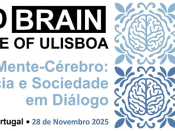Por Rodrigo Wiff (Pontificia Universidad Católica de Chile | UC - Departamento de Ecología).
The most popular method to re-construct catches is based on qualitative information applied mostly to data-poor fisheries. On the other hand, there are only preliminary quantitative methods to correct catches which are based on censored data (when an observation is only partially known). We use the philosophy underpinning these qualitative and quantitative methods to propose a robust framework to correct catches, combining and improving these both approaches. The main improvements of the proposed framework rely on the combination of interviews applied to the stakeholders with fisheries/biological information from fishing monitoring. The proposed framework was applied to common sardine (Strangomera bentincki) and anchoveta (Engraulis ringens), both species fished off central-southern Chile. Fishery information was used to construct an interview which was applied to 88 stakeholders including fishers and administrative workers (fisheries managers, scientists). We used linear models for censored data conditional to the interviews. A model purely based on interviews and other combining interviews and censored regression were used to estimate the proportion of correction between declared landings and real catches. Information from surveys and estimates from censored data models were weighted and combined producing two times series of corrected catches on each fishery. Finally, these time series were used on the current stock assessment models to evaluate changes on the abundance estimates and current exploitation status. Six periods of variable length were determined between 1990 and 2016 where the percentage of catch corrections is kept constant. The highest censored period in both fisheries was between 2009 and 2013 with differences between reported landing and catches of around 35%. Likewise, the lowest censored period took place between 1997-200 with around 5% between reported landings and catches. The framework proposed gives a promising and robust method to estimate catches in data medium/ rich species merging interviews to stakeholders and fisheries/biological information. The application to common sardine and anchoveta shows credible and robust results, therefore this framework can be applied to exploited fish population classified as data-medium/rich species in which a stock assessment could be implemented or it is already in place.
Transmissão em direto via Zoom (password: 405084).






















